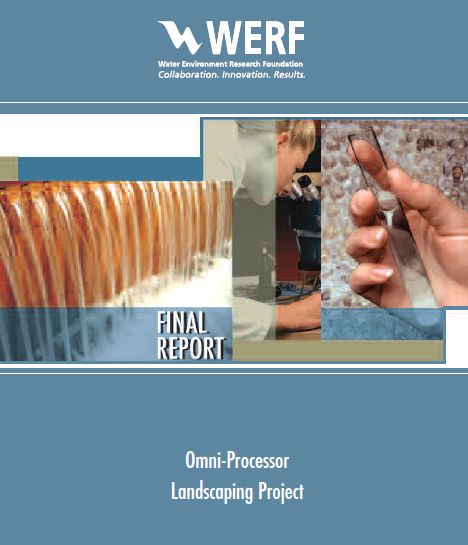
Published in: 2012
Publisher:
Consultancy report by WERF (Water Environment Research Foundation), commissioned by Bill & Melinda Gates Foundation, Seattle, USA
Author:
Kuchenrither, R. D., Stone, L., Haug, R. T.
Uploaded by:
SuSanA secretariat
Partner profile:
common upload
23889 Views
2519 Downloads
Content - Summary
The Bill & Melinda Gates Foundation established a global development program area, Water, Sanitation & Hygiene, which focuses on sanitation that works for the poor in developing countries. A primary theme of this initiative is the vision of an Omni-Processor than can convert excreta (i.e., latrine waste) into beneficial products such as energy and soil nutrients with the potential to develop local business and revenue. The Omni-Processor should be capable of the following: produce a safe product that has value, support a sustainable business model, be adaptable to changing conditions, be community based, and use local skills and materials.
Over 50 technologies or processes were identified that could be used to treat excreta and produce energy and nutrient products. To be successful in developing countries, there are basic criteria that the Omni-Processor must meet including: simple and adaptable technology that is “free standing” without the need for extensive infrastructure such as electricity, water, and sewers. Twelve technologies met these basic criteria and are listed in Table 3-1. While all 12 of these technologies are applicable for developing countries, they do not all hold equal promise to meet the Omni-Processor objectives.
The most promising technologies for the Omni-Processor vision are not single technologies, but technologies and processes which can be coupled to convert excreta into recoverable energy and soil amendment products. Technologies based on bioconversion provide the greatest chance of success compared to thermal conversion processes which are generally too complex for application on small scale in developing countries.
The highest reuse potential from human excreta lies in using its stabilized organics (humus), nitrogen, phosphorus, and trace elements to improve the soil profile and help achieve sustainable agricultural practices. Bioconversion using anaerobic digestion is the key starting process to realize this vision. Anaerobic digestion can biologically stabilize the raw organics and produces a valuable biogas in the process. The biogas can be used as an energy source wherever heat is needed, such as cooking and space heating. More advanced uses of the gas are possible including combined heat and power (CHP) generation (i.e., Stirling engines and other CHP alternatives) to recover both heat and electrical energy.
Anaerobic digestion sets the stage for a number of reuse possibilities that are simply not practical with raw excreta. Liquid digested sludge can be directly applied to agricultural land to recover the nitrogen, phosphorus, trace elements, and organic humus values within the material. The combination of anaerobic digestion and proper land and crop management can achieve a low risk of pathogen transport. Liquid digested sludge can be stored in storage basins or lagoons to achieve additional pathogen destruction, provide a buffer to meet cropping cycles, and further reduce the odor characteristic of the product. If partially dried, the digested waste can be amended with other materials and composted to produce a soil amendment. A compost product can be stored to match crop cycles, but may find other uses and business potentials such as potting soil Vermicomposting (using earthworms) is also possible to further improve the attractiveness of the final product.
To be successful, particularly in the developing world, a sanitation-based business needs an ongoing relationship with a customer that, if well done, will benefit the customer (clean toilet, recovered energy or product) and the service provider (money). There are several factors important to creating a sustainable business model. Entrepreneurs must see people as customers who want a service at a reasonable price. Assistance must be provided with any technology and this is particularly so for people living in places difficult to access with extreme climate conditions. There are opportunities for innovation here, but the innovation may not be in finding a novel process, but in adapting established technologies in ways to fit developing world communities. Finally, management guidance will be needed, from operation and maintenance of the technology to sale and distribution of the by-products. The success of these technologies, either alone or coupled, will depend on how well the process is managed.
++++++++++++++++++
This library entry contains two additional documents:
Omni-Processor: Waste-to-energy technology assessment – Final presentation
by LUX Research
Lead author: Murray McCutcheon, Ph.D.
Contributors: Andrea Bayles
Brian Warshay
Naveen Krishnamurthy
and
Rapid Technology Assessment for Omni-Processor Project
by Concurent Technologies Corporation
Bibliographic information
Kuchenrither, R. D., Stone, L., Haug, R. T. (2012). Omni-Processor Landscaping Project. Consultancy report by WERF (Water Environment Research Foundation), commissioned by Bill & Melinda Gates Foundation, Seattle, USA
Filter tags
Biogas systems English Faecal sludge treatment processes Faeces or faecal sludge Fundamental research and engineering















